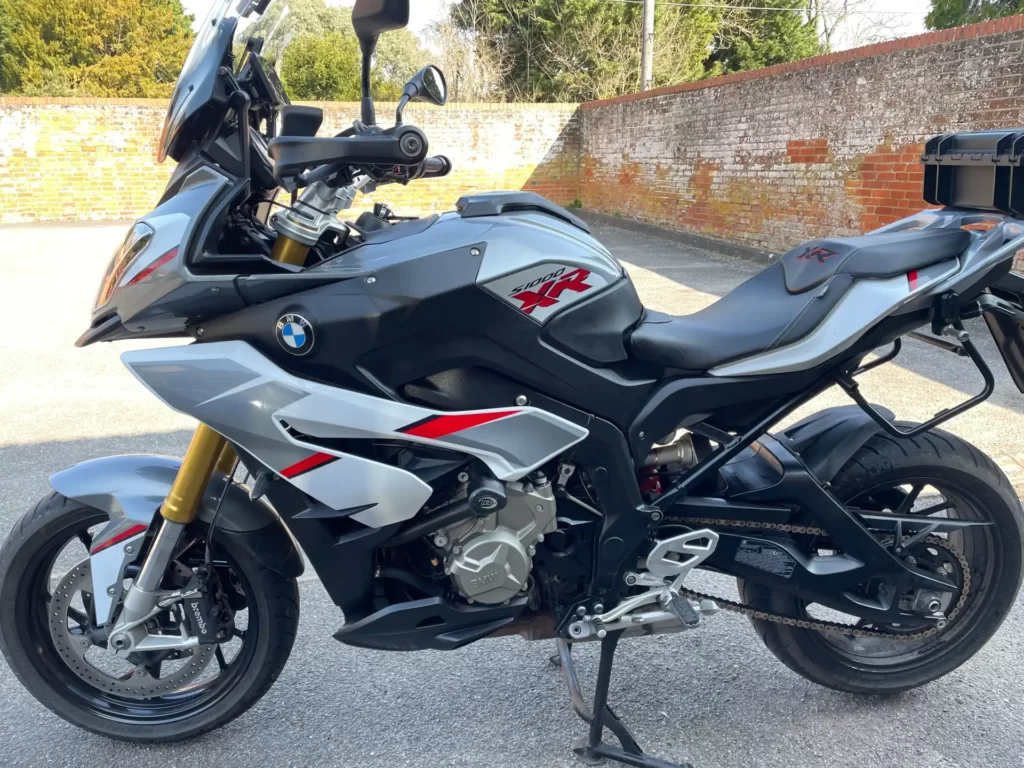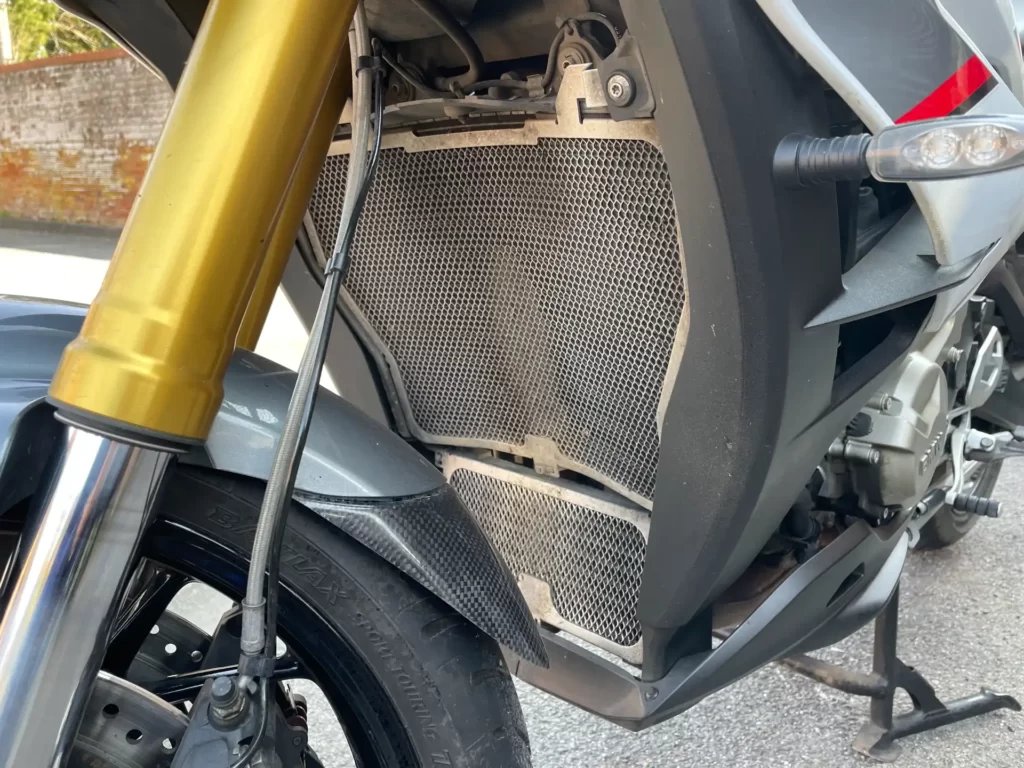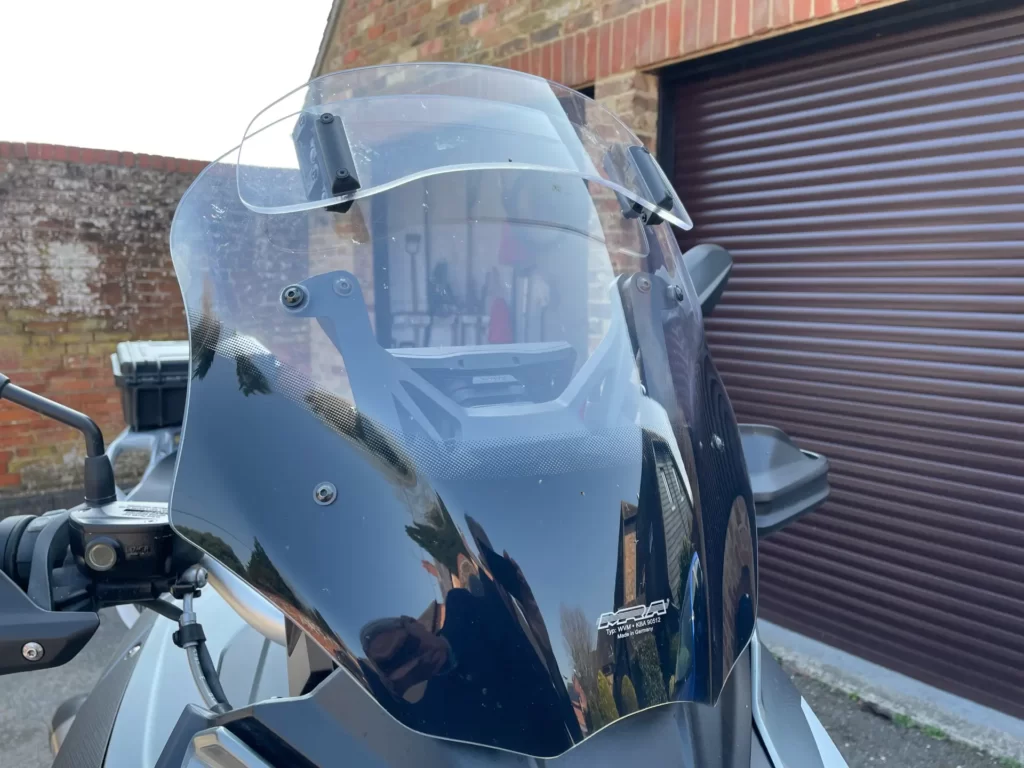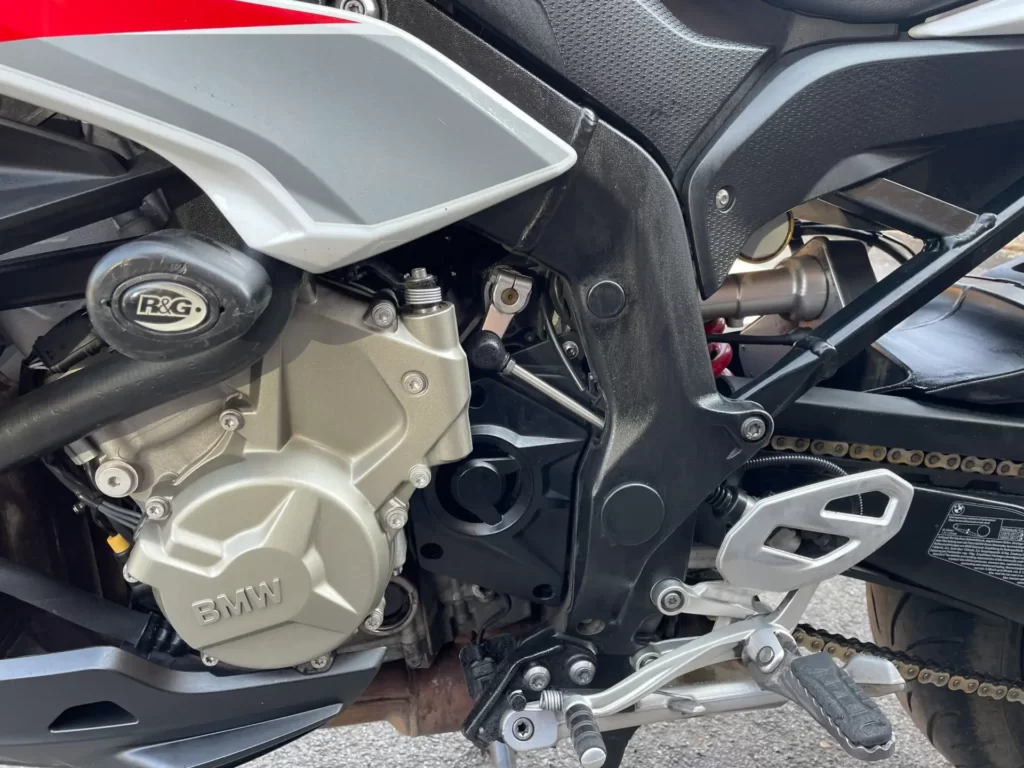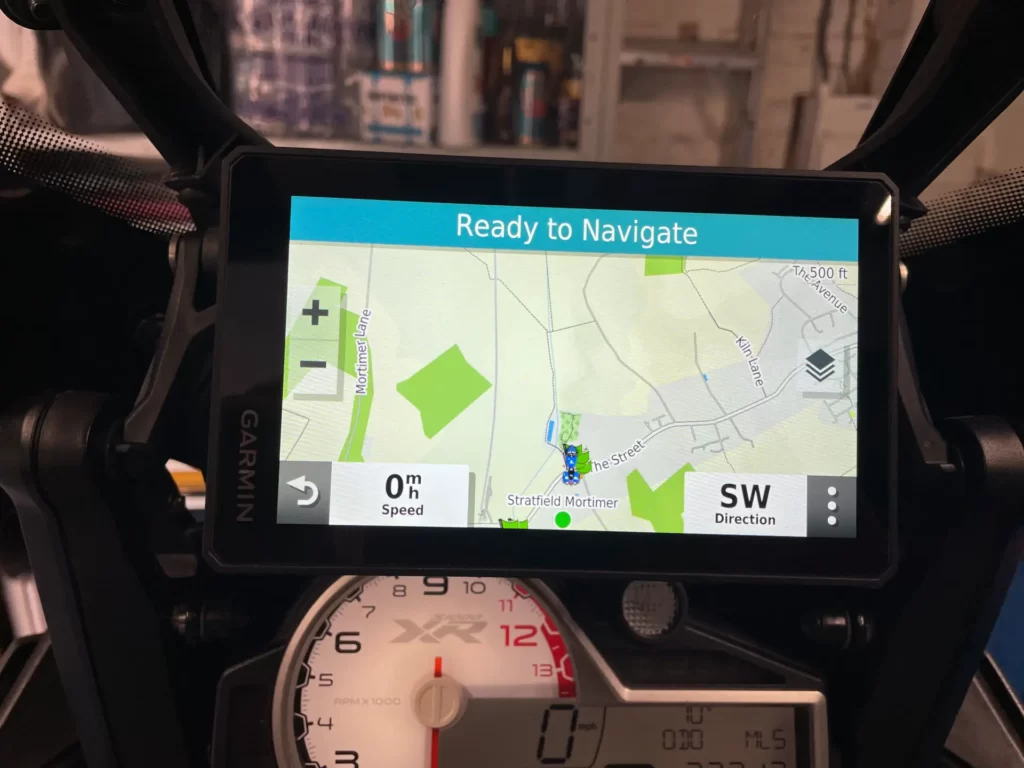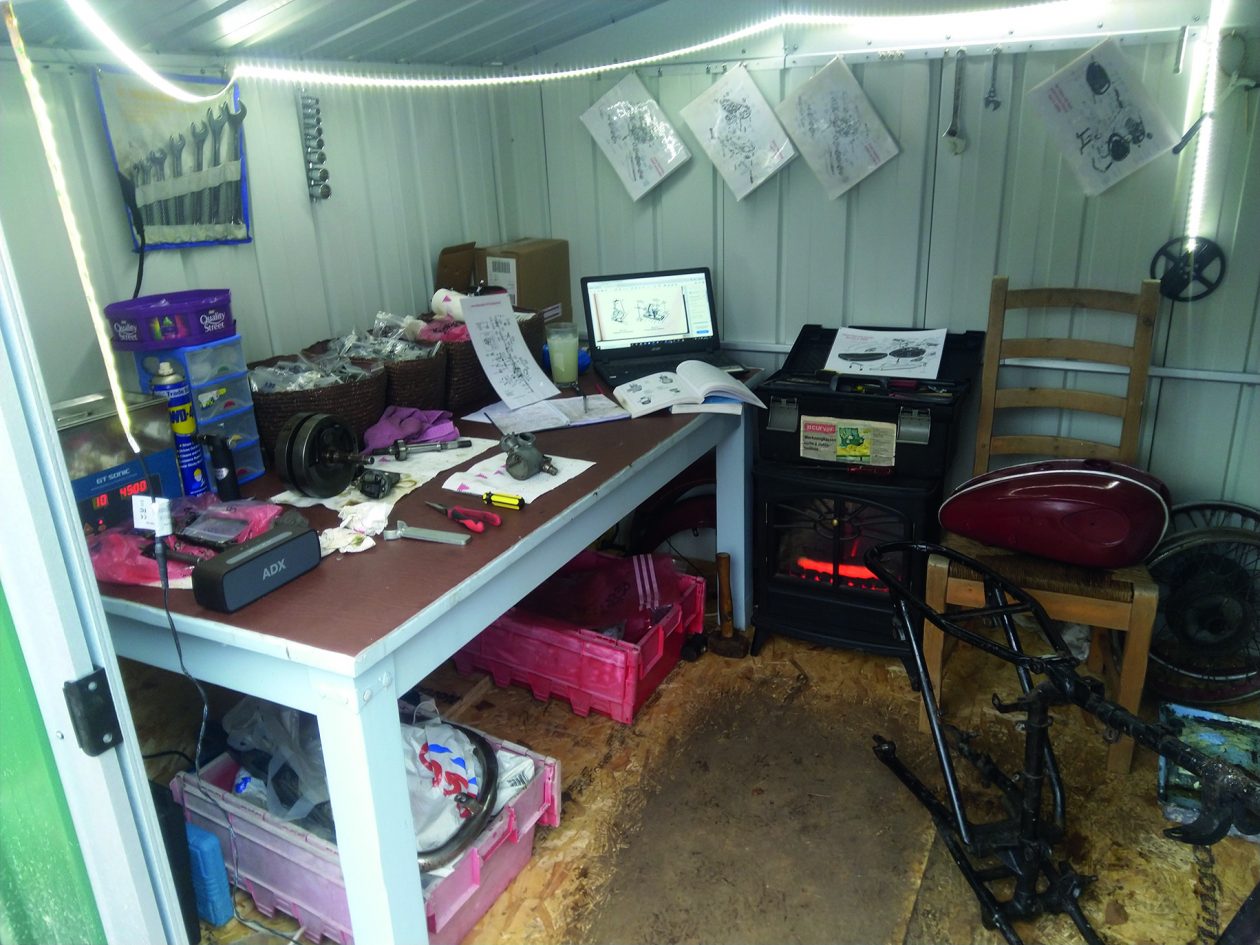The BMW S1000XR was a bit of a Marmite machine when it was first launched back in 2014. The first generation machine had the looks of an Adventure bike but an engine derived from the out-and-out S1000RR sports bike. Many GS riders tried them only to be put off by the four cylinder engine buzzing away and the fear of losing their license due to the way it so easily gobbles up the road. Sports bikers though loved the space the machine gave them with the more relaxed upright riding position yet retained performance very close on the road (and track) to that of their existing bikes. No more tummy-on-the-tank issues or aching elbows and the ability to pack luggage for those trips away. A winner!
I came to my XR in 2016 from my second K1300S sports tourer which was a model then being discontinued. For me the K Series ticked the boxes of lots of easy performance with touring capability. I was persuaded to test ride an XR as an alternative and within 200 meters of leaving the dealer’s I was hooked. It actually steered when you turned the bars rather than the K where you sent a postcard to the front wheel when a corner was coming up. So how does it stack up after nearly 6 years of ownership and 40,000 miles? And why didn’t I swap it for a newer machine after a couple of years as I normally did?
Let’s firstly run through the ‘improvements’ I’ve made and why.
The most obvious concern to someone of my stature was the seat height. With a 840mm high seat this is a tall bike. I can’t get both feet on the ground at the same time. The lower seat option only dropped it by 20mm and was rather lacking some creature comfort where it mattered so I instead braved the height and went for the posh HP seat with the letters ‘XR” embossed in red on the back – vain or what, but it still looks good. What I had to perfect though was planning every stop and getting the correct foot down. My slow riding also improved!
As this was possibly not a 100% guaranteed solution crash bungs were ordered from new, and yes, each side has been tested once during the past 6 years. The first when my foot went down a drain hole when being dropped as a marker on a grass verge and the second when paddling the bike backwards in a lay-by. Lessons learnt – look where you’re putting your feet when stopping on grass and don’t paddle the bike backwards but get off and wheel it as recommended in Roadcraft. But the crash bungs work at zero mph, only that rock in the lay-by did dent the very expensive Akrapovic exhaust.
The next care related extras were the radiator grills and front mudguard extender. I’d never seen a bike with so much expensive radiator exposed with so little protection. The R&G grills and carbon fibre mudguard extender have done their job as far as I can tell. No stone dents or water leaks so far. I also found some plastic bungs on eBay to tidy up the frame drillings (see photo left).
Then we come to the headlight. The XR came with an LED daytime riding light. A single vertical bar just 120mm long – 5 inches – which most would agree is not a lot. On a sunny day it’s easily lost amongst other bright reflections and if you think most car drivers are already not looking for a bike let alone a small, vertical LED strip at junctions, my thoughts were this was not a good solution. Out came the standard H7 dip beam bulb to be replaced with a H7 HID unit made in Germany. Is it legal? Is my life worth it? Since fitting it I’ve not had any issues with other road users not seeing me and I’d argue it’s only as bright as the daytime driving lights you see on many modern SUVs. At night it’s a bit bright but the main beam is brighter still – and I’m not being flashed by other road users which is my usability test.
Still on the subject of not being seen, the horn on most motorcycles are, I think we’d agree, a bit weeny. Cloistered in their Audis, Mercs, and BMWs whilst probably on the hands-free ‘phone they hardly penetrate the unsuspecting drivers’ consciousness. Given most drivers also relate sound to vehicle size this doesn’t help even if they do hear you. The answer – a Denali SoundBOMB air horn. At £35 it’s a winner for me. Seeing drivers jump out of the way when they think something the size of an HGV blasts them is most satisfying!
Moving rearwards the next change was the windscreen. Out-of-the-box the 1st generation XR was not a quiet ride with lots of wind buffering. It sounds like a big flag constantly flapping just above your head. Ear defenders help but on long motorway trips the noise is not good. The solution I came to (much too late after five years) was to replace the standard screen with an MRA screen, again made in Germany. For a little over £100 this has transformed the ride and I can now actually hear the engine above 50mph and even leave my visor open above 30mph. A must-do change for anyone planning a ride over a couple of hours on one of these 1st gen machines. I don’t know about wind noise on the 2nd gen, as the screen is different, but some owners have complained of the same issue in conversations.
Luggage was one of the attractions of the XR so I specified panniers from new. And yes they’ve been in the garage loft ever since I rode it home. Why? ‘Cause they are huge, make the bike look like a pregnant bumble bee and filtering is almost impossible. The solution – I bought the BMW semi-rigid top bag which hooks onto the rear rack. It’s large enough to stow gear for a 10 day trip around France, as long as you leave the hair dryer at home and are prepared to rinse through a couple of tee shirts and pants along the way. We’re planning to do Scotland NW500 this Spring so with the variable weather (wet, cold, hot, who knows) I might get the panniers out for the first time in nearly 6 years to stow the range of gear I’ll need.
What’s life been like with the XR?
Well, it does everything I want it to do and does it very well, to a level beyond my riding skills. From touring, track days, coaching on Skills Days at Thruxton, observing for TVAM and social rides out, it keeps up with everything else (even RR’s). Under the seat I stow two (different) types of puncture repair kits, gas cylinders, spare headlight bulb, tool kit and a set of waterproofs. A small rear box holds the paperwork for observing, spare gloves, shades, cap, drink, etc. which is replaced by the BMW bag when on longer trips.
Importantly it hasn’t let me down. It’s been around France and the Pyrenees at least 3 times, Nurburgring trips with TVAM twice, and Wales probably 20 times. It does 5 or 6 IAM Track Skills Days around Thruxton each summer and a few thousand miles observing each year, these though at a much slower pace.
It’s been serviced regularly every 6,000 miles with the two big (expensive) services at 18 and 36,000 miles. Otherwise it’s been consumables like tyres (regularly), a new battery at 3 years, chain and sprockets after 29,000 miles, and new front discs and pads at 32,000 miles.
I stripped the rear suspension and re-greased the bearings at 26,000 miles and replaced the side stand brass bearing insert after 5 years as the lean angle was getting worryingly high.
Age related work has been to change the cam chain adjuster cap, which cost £23, to stop the chain rattle, especially on start-up from cold. It’s a BMW part and recommended after 9,000 miles but they hardly ever fit them at a service. I fitted mine at 37,000 miles and the engine now runs much quieter and the rattle at cold start-up has largely gone. I’ve also just replaced the left footpeg mount around which the gear lever moves as this too was getting wobbly – a sure sign of middle age! At £35 it was cheap for a BMW part.
Lastly we come to the exhaust valve! Clearly made just to get the machine through type approval testing the exhaust valve flapper is an integral part of the 4 into 1 main exhaust system which goes from the cylinder head round to the slip-on muffler and includes the catalytic converter. The valve probably costs £25 to make but it’s welded into a part costing over £3,000.
Mine stopped working this last winter in a partly closed position. Hmmm I thought, this bike is getting smoother and quieter with age – only to discover the valve wasn’t moving. Another TVAM member’s jammed fully open recently and boy was it loud when burbling through town. There’s nothing on the dash to show the fault and only when connected to a diagnostic analyser do the error codes come up. Mine had three going from; “valve operating range incorrect”, through; “valve not operating” to finally; “lost communication with valve actuator”. Yes, the electronic actuator was bust, possibly as a result of the mechanical valve becoming very stiff or seizing. Replacement actuator from BMW £170! – eBay £60 from a bike being broken by a dealer. No contest and 30mins to fit with the help of a bit of string and a 10mm spanner. The flap took a lot longer to get moving freely with a lot of YouTube videos on how to get access to the bearing and which high temperature lubricant to use. Fingers crossed it’ll now work for another 36,000 miles.
But why have I kept the bike this long?
Firstly, because I just love it. Luckily mine doesn’t suffer from the vibrations some riders complained of, but having ridden 4 cylinder bikes most of my riding career maybe I’m a bit immune.
Secondly, because the XR dropped in value from new like a stone in a muddy pond. Add in the mileage I was doing and the depreciation on a 2 year old XR with over 15,000 miles on it was enough to make a grown man cry. It does mean that they make great buys if you’re in the market for a second hand one though. And if I changed it what would I get but the same with a smaller number on the odometer and many thousands of pounds less in my bank account. At 6 years old with 40,000 miles on the clock annual depreciation is now almost zero as it’s not worth very much anyway.
Lastly, because I think it still looks good, possibly better than the 2nd gen bikes (my personal view) which come in a limited range of colours. Why would I pay BMW extra money to have one in their team colours?
But do I miss the upgrades on the 2nd Gen? Certainly the large TFT screen looks good but as a consolation I treated myself to a Garmin XT satnav which also has a TFT screen. It doesn’t integrate with the BMW thumb wheel but do I need to know my lean angle or average throttle opening? (Usually only around 9% by all accounts).
I was hoping the shift cam engine would have trickled down from the RR but that wasn’t to be – but why would you need more than 160bhp in an adventure bike anyway? I’ve only ridden a 2nd gen machine a short distance so it’s difficult for me to compare new with old. I arranged a test ride when they first came out but a red engine fault light came up after a couple of miles so had to take it back. In that short distance it didn’t feel that different and the reviews I read around the time of the launch said it possibly wasn’t worth changing if you already had a series 1. What I do hear is the engine is more refined and has lost the ‘manic teenager’ mode above 8,000 rpm when the front goes light and it is possible to literally rip up the tarmac (yes, I did that apparently in France on a hot day – unintentionally obviously).
So there we have it. I’m trapped by depreciation and by having invested £s in keeping the bike running in good mechanical condition. I love what it does as a bike and haven’t yet found the motivation or had a compelling desire to buy anything else. As it’s reached ‘middle age’ it’s become more of a project as well as my ride. I was recently offered an XR engine with just 4,100 miles on it for £1,500. But what would I do with it? Do these engines fail? I haven’t seen anything to say they do, so fingers crossed….
Andy Slater
First published in Slipstream June 2022

